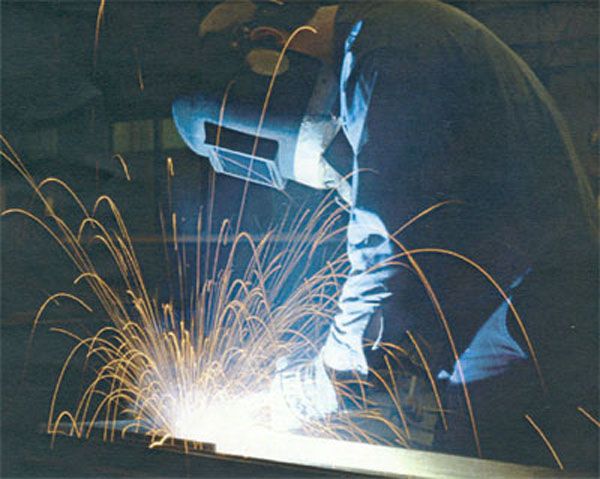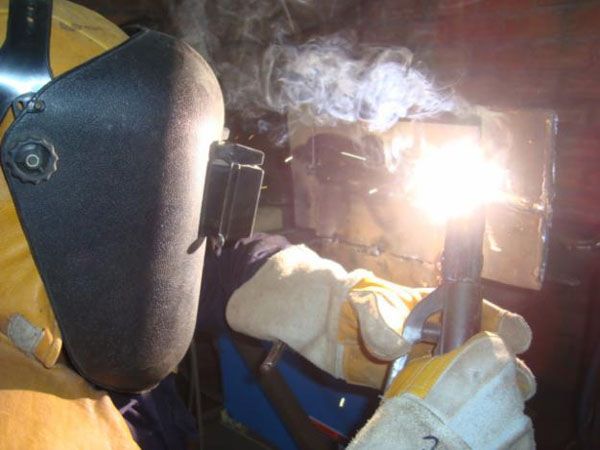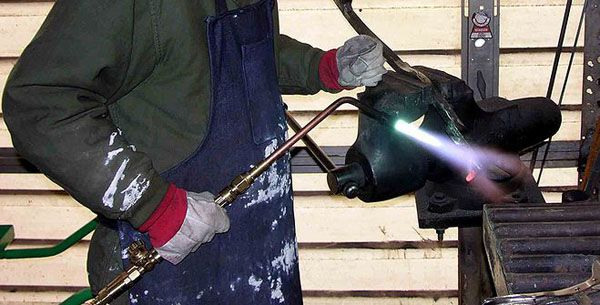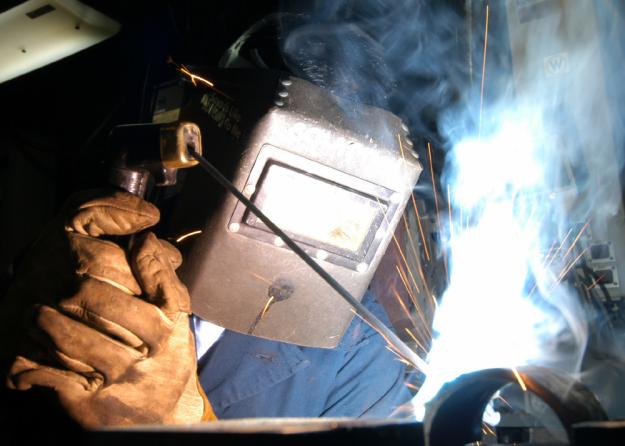
.
The different types of weldsWelding, in engineering, is the procedure by which two or more pieces of metal are joined by the application of heat, pressure, or a combination of both, with or without the contribution of another metal, called filler metal, whose melting temperature is lower than that of the parts to be welded.
Most welding processes can be separated into two categories:
pressure weldingwhich is done without the addition of another material by applying sufficient pressure and normally aided by heat.
Y fusion weldingmade by applying heat to the surfaces, which melt in the contact area, with or without the addition of another metal.
Regarding the use of filler metal, a distinction is made between ordinary welding Y autogenous welding. The latter is done without adding any material. Ordinary or alloy welding is carried out by adding a filler metal that melts and adheres to the base pieces, so they do not really participate in the welding by fusion.

It is also distinguished between soft soldering Y hard soldering, depending on the melting temperature of the filler metal used; soft soldering uses filler metals whose melting point is below 450 ºC, and hard soldering metals with higher temperatures.
Thanks to the development of new techniques during the first half of the 20th century, welding replaced bolting and riveting in the construction of many structures, such as bridges, buildings, and ships. It is a fundamental technique in the motor industry, in aerospace, in the manufacture of machinery and in any product made with metals.
The type of welding most suitable for joining two pieces of metal depends on the physical properties of the metals, the intended use of the piece and the facilities available. Welding processes are classified according to the pressure and heat sources used.
The original pressure welding procedure is that of forge welding, practiced for centuries by blacksmiths and craftsmen. The metals are heated in a furnace and hammered together. This technique is used less and less in modern industry.
But let’s get into each of the types of welds:
ORDINARY OR ALLOY WELDING
It is the method used to join metals with metal alloys that melt at relatively low temperatures. A distinction is usually made between hard and soft solders, depending on the melting point and strength of the alloy used. The filler metals for soft solders are alloys of lead and tin and sometimes small amounts of bismuth. In hard soldering, alloys of silver, copper and zinc (silver soldering) or copper and zinc (brass soldering) are used.
To join two pieces of alloyed metal, their surface must first be mechanically cleaned and coated with a layer of flux, usually rosin or borax. This chemical cleaning helps the parts bond more strongly by removing rust from the metals. The surfaces are then heated with a welder or torch, and when they reach the melting temperature of the filler metal, the filler metal is applied, which runs freely and hardens when it cools. In the process called resurfacing, the filler metal is applied to the pieces separately, then they are placed together and heated. In industrial processes, ovens are often used to heat the parts.
This type of welding was already practiced, more than 2,000 years ago, by the Phoenicians and the Chinese. In the 1st century AD, Pliny speaks of soldering with tin as a common procedure for craftsmen in the elaboration of ornaments with precious metals; in the fifteenth century the use of borax as a flux is known.

FUSION WELDING
This type groups together many welding procedures in which a fusion between the metals to be joined takes place, with or without the contribution of a metal, generally without applying pressure and at temperatures higher than those used in ordinary welding. There are many procedures, among which gas welding, arc welding and aluminothermic welding stand out. Other more specific ones are particle beam weldingwhich is carried out in a vacuum by means of an electron or ion beam, and the light beam weldingwhich usually uses a laser beam as its energy source.
gas welding
Gas or torch welding uses the heat of combustion of a gas or gas mixture, which is applied to the surfaces of the parts and to the filler metal rod. This system has the advantage of being portable since it does not need to be connected to the electrical current. Depending on the gas mixture used, a distinction is made between oxyacetylene welding (oxygen/acetylene) and oxyhydrogen welding (oxygen/hydrogen), among others.

Arc welding
Arc welding procedures are the most widely used, especially for welding steel, and require the use of electric current. This current is used to create an electrical arc between one or more electrodes applied to the part, generating enough heat to melt the metal and create the bond.
Arc welding has certain advantages over other methods. It is faster due to the high concentration of heat that is generated and therefore produces less distortion in the joint. In some cases, fusible electrodes are used, which are the filler metals, in the form of flux-coated or bare rods; in other cases a tungsten refractory electrode is used and the filler metal is added separately. The most important arc welding procedures are covered electrode, gas shielded and flux powder.
Arc welding with covered electrode
In this type of welding, the metallic electrode, which is a conductor of electricity, is covered with flux and connected to the current source. The metal to be welded is connected to the other terminal of the electrical source. When the tip of the electrode touches the piece of metal, the electric arc is formed. The intense heat of the arc melts the two parts to be joined and the tip of the electrode, which is the filler metal. This procedure, developed at the beginning of the 20th century, is mainly used to weld steel.

Gas Shielded Arc Welding
It is the one that uses a gas to protect the fusion of the air of the atmosphere. Depending on the nature of the gas used, a distinction is made between MIG weldingif you use inert gas, and MAG welding, if you use an active gas. The inert gases used as protection are usually argon and helium; active gases are usually mixtures with carbon dioxide. In both cases the electrode, a bare or flux-coated rod, is melted to fill the joint.
Another type of gas shielded welding is TIG welding, which uses an inert gas to shield metals from oxygen, like MIG, but differs in that the electrode is not fusible; a tungsten refractory rod is used. Filler metal can be supplied by bringing a bare rod close to the electrode.
Arc welding with flux powder
This procedure, instead of using a gas or flux coating on the electrode to protect the joint from air, uses a bath of powdered flux material where the parts to be welded are immersed. Various bare wire electrodes can be used and the excess powder is used again, making it a very efficient procedure.
aluminothermic welding
The heat required for this type of welding is obtained from the chemical reaction of a mixture of iron oxide with very fine aluminum particles. The resulting liquid metal constitutes the filler metal. It is used to weld breaks and cuts in heavy pieces of iron and steel, and is the method used to weld the rails or rails of trains.
PRESSURE WELDING
This method groups together all the welding processes in which pressure is applied without the addition of metals to make the joint. Some procedures coincide with those of fusion, such as gas pressure welding, where the pieces are heated with a flame, but they differ in that the union is made by pressure and without adding any metal. The most used process is resistance welding; others are the forge welding (described above), the friction welding and other more recent methods such as ultrasonic welding.
resistance welding
This type of welding is carried out by heating metals due to their resistance to the flow of an electric current. Electrodes are applied to the ends of the parts, they are pressed together and a strong electrical current is passed through them for an instant. The joining area of the two pieces, as it is the one that offers the greatest electrical resistance, heats up and melts the metals. This procedure is widely used in industry for the manufacture of metal sheets and wires, and is very well suited to automation.
.
Source: David Antonio Cruz Ramos
.



